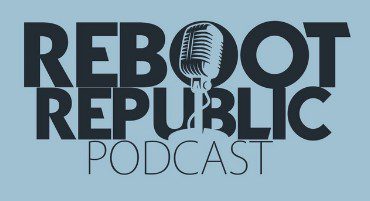Archive for April 2023
Prevalence and outcomes of rapidly progressive dementia: a retrospective cohort study in a neurologic unit in China
Overcoming challenges in adherence and engagement digital interventions: The development of the ALGEApp for chronic pain management
988 It is Not Just a Number Webinar #1
“In an ideal world that would be a multiagency service because you need everybody’s expertise.” Managing hoarding disorder: A qualitative investigation of existing procedures and practices
Health Education Curriculum Analysis Tool (HECAT)
Prisons of Debt: The Afterlives of Incarcerated Fathers

A scoping review of digital workplace wellness interventions in low- and middle-income countries
An Integrative Review of Sistah Circles in Empirical Research
Opioid use-related stigma and health care decision-making.
Social interaction can function as a reinforcer for dogs: Effects of stimulus duration and session parameters
The double burden of maldistribution: a descriptive analysis of corporate wealth and income distribution in four unhealthy commodity industries
How Data Analysis Helped California State University Make an Important Decision
Measurement invariance and other psychometric properties of the Short Inventory of Problems (SIP-2R) across racial groups in adults experiencing homelessness and alcohol use disorder.
Impact of discrimination and coping on Veterans’ willingness to seek treatment for physical and mental health problems.
Uncertainty in complex healthcare settings – The need for a comprehensive approach
‘Picture imperfect’: the motives and uses of patient photography in the asylum

History of Psychiatry, Ahead of Print.
In the nineteenth century, photography became common in psychiatric asylums. Although patient photographs were produced in large numbers, their original purpose and use are unclear. Journals, newspaper archives and Medical Superintendents’ notes from the period 1845–1920 were analysed to understand the reasons behind the practice. This revealed: (1) empathic motivation: using photography to understand the mental condition and aid treatment; (2) therapeutic focus on biological processes: using photography to detect biological pathologies or phenotypes; and (3) eugenics: using photography to recognise hereditary insanity, aimed at preventing transmission to future generations. This reveals a conceptual move from empathic intentions and psychosocial understandings to largely biological and genetic explanations, providing context for contemporary psychiatry and the study of heredity.
A longitudinal assessment of posttraumatic stress symptoms and pain catastrophizing after injury.
Fast Facts 2022

Psychological Distress, Destructive Conflict, and Parenting among Residential and Nonresidential Fathers
Fentanyl overdose concerns among people who inject drugs: The role of sex, racial minority status, and overdose prevention efforts.
Better sleep, better life? Testing the role of sleep on quality of life
Marup promoting social and economic development: implications for feminist social work with groups
Early onset of care needs in the older population: The protective role of housing conditions
Pandemic coping and COVID-19 preventive behaviors among cancer survivors
Immersive Virtual Tasks with Motor and Cognitive Components: A Feasibility Study of Adults and Older Adult Fallers and Nonfallers
Android robot was beneficial for communication rehabilitation in a patient with schizophrenia comorbid with autism spectrum disorders
Health engagement: a systematic review of tools modifiable for use with vulnerable pregnant women
The relationship between students’ socio-demographics and the probability of grade repetition in Brazilian primary education: is it decreasing over time?
Automatic entry and coding of social networks and dyadic peer ratings
Helping Kids Make Decisions
Assessing Chronic Kidney Disease Knowledge, Beliefs, and Risk among Detroit Residents
A Grounded Theory Model of Relationship Decision-Making in Non-Offending Partners of Individuals Accused of Sexual Offending
Evaluation of policies limiting opioid exposure on opioid prescribing and patient pain in opioid-naive patients undergoing elective surgery in a large American health system
Nostalgia, media, and technologies of the future
Low Self-Control, Peer Risk Factors, and Adolescent Vaping Activity
Ageing and physical resilience after health stressors
Brokers, Intermediaries, Boundary Spanners, Oh My!
Shedding light on participant selection bias in Ecological Momentary Assessment (EMA) studies: Findings from an internet panel study
Why do preconception and pregnancy lifestyle interventions show little evidence of success in preventing overweight and obesity in children? A scoping review
Welcome to Ireland (and homelessness)

Associations of 5-year changes in alcoholic beverage intake with 5-year changes in waist circumference and BMI in the Coronary Artery Risk Development in Young Adults (CARDIA) study
Patient Goals in Hospice Cancer Pain Management: A Total Pain Case Scenario
Mobile learning-technology barriers in school education: teachers’ views
Clinical Social Work with Individuals, Families, and Groups The Healing Power of Relationships
